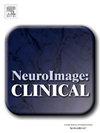Arterial spin labeling MRI based perfusion pattern related to motor dysfunction and L-DOPA reactivity in Parkinson’s disease
IF 3.4
2区 医学
Q2 NEUROIMAGING
引用次数: 0
Abstract
Objective
Identifying intrinsic pattern of Parkinson’s disease (PD) helps to better understand of PD and provide insights to disease identification and treatment monitoring. Here we confirmed the PD-related covariance pattern (PDRP) by using arterial spin labelling technology (ASL-PDRP) and explore its potential for predicting motor progression and levodopa (L-DOPA) reactivity reduction.
Methods
Data from an original cohort of 179 PD and 62 normal controls (NC) and a validation cohort including 36 PD and 19 NC to construct and validate the ASL-PDRP. The correlations between the pattern and motor symptoms were analyzed cross-sectionally and longitudinally (71 PD owned longitudinal data) with hierarchical linear regression analysis. Kaplan-Meier analysis was conducted in 54 L-DOPA-managed PD patients to predict the levodopa reactivity reduction.
Results
The first principal component was predominantly recognized as the ASL-PDRP, with its expression being higher in PD than NC in both sets (original: P = 0.017, AUC = 0.598; validation: P = 0.024, AUC = 0.661). The pattern expression was associated with UPDRS III (P = 0.006) and sub-symptoms (axial: P < 0.001; rigidity: P = 0.003; bradykinesia: P = 0.015) at baseline. The ASL-PDRP could predict the progression of UPDRS III (P = 0.021, β = 4.930). Higher expression of the pattern had slower rate of levodopa reactivity reduction in PD patients with axial symptom (P = 0.031).
Conclusion
The identified ASL-PDRP may have potential for characterizing PD with the ability to predict motor progression and L-DOPA reactivity reduction.

基于动脉自旋标记磁共振成像的灌注模式与帕金森病患者的运动功能障碍和 L-DOPA 反应有关
目的明确帕金森病(PD)的内在模式,有助于更好地了解PD,为疾病的识别和治疗监测提供依据。本研究通过动脉自旋标记技术(ASL-PDRP)证实了pd相关协方差模式(PDRP),并探讨了其预测运动进展和左旋多巴反应性降低的潜力。方法选取179名PD和62名正常对照(NC)的原始队列和36名PD和19名NC的验证队列,构建并验证ASL-PDRP。采用层次线性回归分析横截面和纵向(71例PD拥有纵向数据)分析模式与运动症状之间的相关性。对54例左旋多巴治疗的PD患者进行Kaplan-Meier分析,预测左旋多巴反应性降低。结果第一主成分主要为ASL-PDRP,其在PD组中的表达高于NC组(P = 0.017, AUC = 0.598;验证:P = 0.024, AUC = 0.661)。模式表达与UPDRS III (P = 0.006)和亚症状(轴向:P <;0.001;刚度:P = 0.003;运动迟缓:P = 0.015)。ASL-PDRP可以预测UPDRSⅲ期的进展(P = 0.021, β = 4.930)。轴向症状PD患者左旋多巴反应性降低率P = 0.031,表达高的PD患者左旋多巴反应性降低率较低。结论所鉴定的ASL-PDRP可能具有预测PD运动进展和L-DOPA反应性降低的潜力。
本文章由计算机程序翻译,如有差异,请以英文原文为准。
求助全文
约1分钟内获得全文
求助全文
来源期刊

Neuroimage-Clinical
NEUROIMAGING-
CiteScore
7.50
自引率
4.80%
发文量
368
审稿时长
52 days
期刊介绍:
NeuroImage: Clinical, a journal of diseases, disorders and syndromes involving the Nervous System, provides a vehicle for communicating important advances in the study of abnormal structure-function relationships of the human nervous system based on imaging.
The focus of NeuroImage: Clinical is on defining changes to the brain associated with primary neurologic and psychiatric diseases and disorders of the nervous system as well as behavioral syndromes and developmental conditions. The main criterion for judging papers is the extent of scientific advancement in the understanding of the pathophysiologic mechanisms of diseases and disorders, in identification of functional models that link clinical signs and symptoms with brain function and in the creation of image based tools applicable to a broad range of clinical needs including diagnosis, monitoring and tracking of illness, predicting therapeutic response and development of new treatments. Papers dealing with structure and function in animal models will also be considered if they reveal mechanisms that can be readily translated to human conditions.
 求助内容:
求助内容: 应助结果提醒方式:
应助结果提醒方式:


